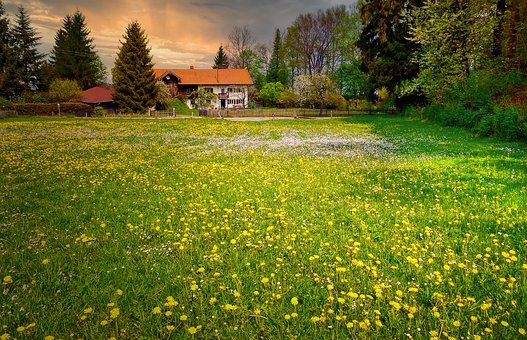Natural grass or artificial turf, which one to choose?
Turf is a dilemma when designing a garden or an interior patio, that is, whether it is artificial or natural, since both have advantages and disadvantages.
However, there are factors such as initial investment, use and maintenance that are important to make the best decision.
Discover the properties of artificial grass and natural grass!
Artificial turf and natural grass, what are they like?
Artificial turf is a surface composed of natural fibers similar to grass, generally short and unloaded, made of polyethylene or polyamide, due to its high resistance.
Unlike natural grass, artificial turf does not require fertilizers, water, mowing or weeding; however, it cannot replace the appearance or characteristics of natural grass.
Spatial characteristics
One of the first factors to consider is space, as maintaining a small lawn may be easier than maintaining a large lawn, especially in the case of a natural lawn.
Also, it is important to consider whether the space in which you want to place it is outdoors or indoors, as there is no danger of moisture affecting the structure of the house.
Applications
Another important factor to consider is the use to be given to the grass, since it is not the same to use it only to enjoy it as part of the decoration than to have a pet or small children.
Also, it should be taken into account if the practice of a certain sport is mandatory, as in this case. Artificial turf is the best option.
Beauty
While this factor comes down to personal preference, the truth is that artificial turf always looks the same: the same length, color and texture, regardless of season, weather or material. On the other hand, natural grass has different heights, shades and textures, due to changes in climate, light and humidity at different times of the year.
Care and maintenance
In addition, an important factor to consider is the care and maintenance of each one. While natural grass requires several hours of work per week, plus gallons of water to keep it moist and mowed regularly, artificial turf does not require water and maintains its appearance at all times.
However, it should be brushed or combed and shaken from time to time, as with use and time, the fibers will break down causing uneven wear to the turf.
Initial investment
Finally, another factor to consider is the initial investment: although natural grass requires a small investment initially, the operating costs of maintaining it are usually expensive: equipment and supplies for mowing, feeding and replanting.
On the other hand, installing artificial turf requires a significant investment from the outset, even if the advantage is its relatively long life and inexpensive maintenance.

Natural grass over artificial one.
Yay! 🤗
Your content has been boosted with Ecency Points, by @panconcajeta.
Use Ecency daily to boost your growth on platform!
Support Ecency
Vote for new Proposal
Delegate HP and earn more